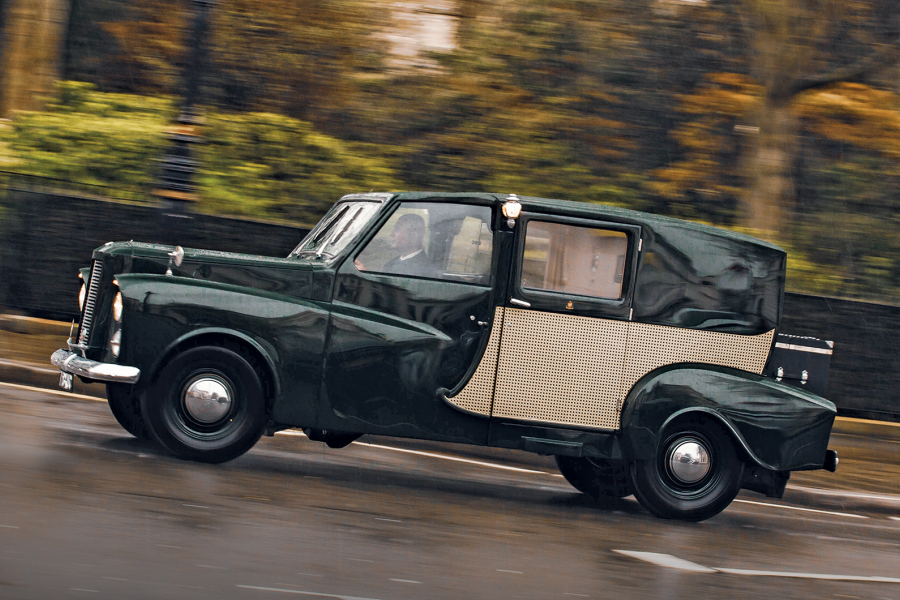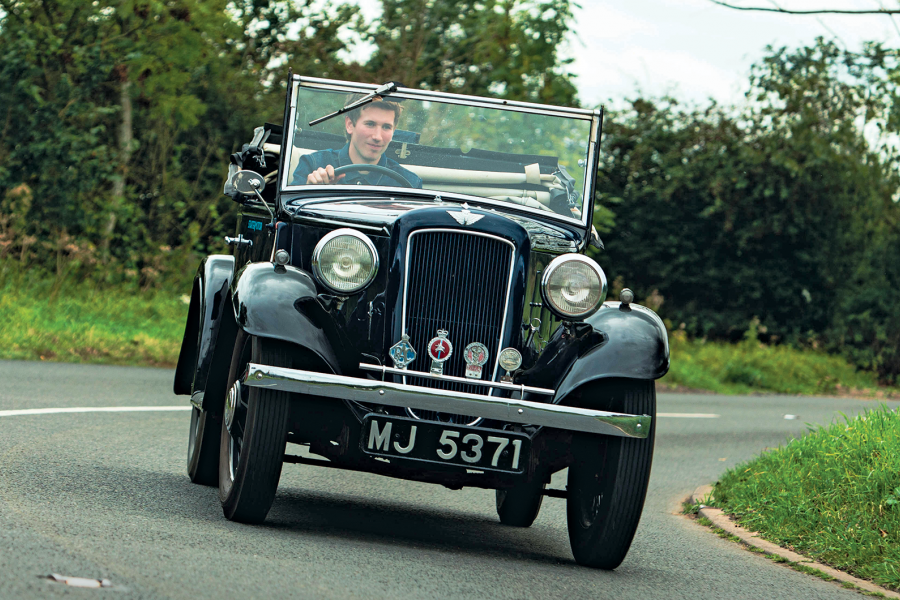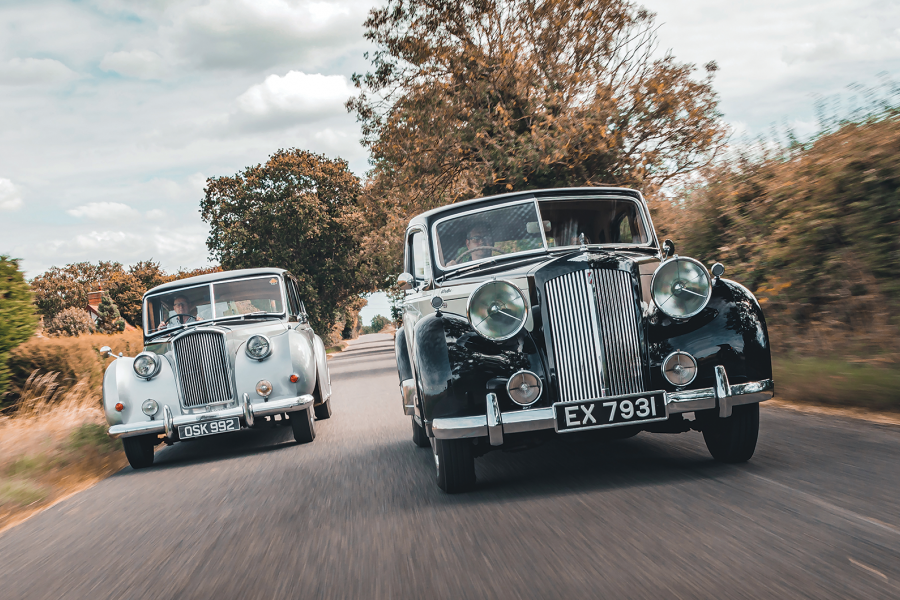Still in his early 30s but already a veteran of several restorations (including an A40 Sports that went into the James Hull collection), While’s love of the Atlantic and ’50s British cars in general is great to see in someone so young.
He also has an Atlantic saloon (no Atlantic owner ever seems to have just the one) and is treating his convertible, bought from a relative of its first 1949 owner, as a rolling project.
Although many Atlantics had their running gear removed by the Healey Brigade when they were worthless bangers, the upside of that once-toxic relationship is that there are no problems today with related mechanical parts for the cars.
Not so body and trim, although the Austin Counties Car Club is good at sourcing items and even occasionally gets parts remanufactured.
While lives close to our photographic location at Birdlip, Gloucestershire, but Mark O’Kearney had no hesitation about jumping into his mid-green, largely original 1952 Atlantic saloon and driving all the way from Essex.
Heavily steeped in all things Austin, O’Kearney owns three Atlantics plus a Sheerline.
These are cheerful cars that make pedestrians and other drivers smile.
They motor along with a contented, rounded and warm burble, although both saloon and convertible struggle slightly from the fuel vaporisation and heat soak endemic in non-crossflow engines where the twin SU carbs sit above the exhaust manifolds.
Inside, the high window sills make you feel like the pygmy passengers depicted in the brochure artwork for the cars, and the gold-faced instruments give the dash a toy-like appearance; ditto the creamy control knobs and buttons for starter, choke and lights.
Two adults would be intimate in the back of the convertible, but the fixed-head is a true four-seater.
The big, flat, split-bench front seat seemed to challenge the morals of the ’50s with its ‘courting’ possibilities, but suits the car’s relaxed character well.
The pedals emerge from the floor and the Sheerline steering wheel with its pearl-finish rim is huge, inviting police-style wheel-feeding, even though the effort required is fairly light.
Neither the best nor the worst of its kind, the column change asks only that you be fairly decisive in your actions.
First is almost redundant for anything other than hill starts, and with 140lb ft of torque at 2500rpm the Austin gathers pace easily in second.
It doesn’t seem to matter that neither Atlantic does anything in a hurry, but in the context of 70 years ago they were fast, probably irritatingly so to the owners of certain vintage sports cars who were doubtless quick to decry the handling as ‘greased blancmange’ without ever driving one.
In fact, they corner firmly, safely and capably. I didn’t notice any ‘Austin nod’ or the wallow the Atlantic’s spivvy, decadent image suggests.
To be honest, I wasn’t about to thrash these two old dears anyway; it was better to soak up their considerable ambience as cars that evoke the feel and flavour of the time they come from, and the times they lived through, so powerfully.
Although the likes of LJK Setright and Alan Clarke spoke of them in warm terms, the A90 also became a lazy metaphor for misplaced post-war optimism and bad market research.
A sort of British Edsel.
All I can tell you is that, 70 years on, the Atlantic has found its place at last, as a rare and valuable prize in the world of early post-war British classics.
Images: John Bradshaw
FACTFILE
AUSTIN A90 ATLANTIC
- Sold/no built 1949-’52/7981
- Construction steel chassis, steel body
- Engine all-iron, ohv 2660cc ‘four’, twin SU carburettors
- Max power 88bhp @ 4000rpm
- Max torque 140Ib ft @ 2500rpm
- Transmission four-speed manual, RWD
- Suspension: front independent, by wishbones, coil springs rear live axle, semi-elliptic leaf springs; lever-arm dampers f/r
- Steering Burman steering box
- Brakes Girling hydro-mechanical drums
- Length 14ft 9⅛in (4500mm)
- Width 5ft 10in (1778mm)
- Height 5ft (1524mm)
- Wheelbase 8ft (2438mm)
- Weight 2968Ib (1346kg)
- 0-60mph 18.4 secs
- Top speed 95mph
- Mpg 22
- Price new £824
- Price now £10-35,000
CHECK OUT THE AUSTINS FOR SALE IN OUR CLASSIFIEDS
READ MORE
Buyer’s guide: Triumph Spitfire
Buyer’s guide: Morris Minor MM & Series II
Citroën GS Pallas vs Vanden Plas 1.7: avant-garde for the masses
Martin Buckley
Senior Contributor, Classic & Sports Car


























